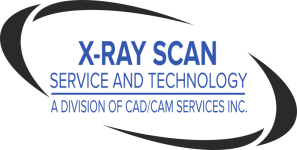X-Ray Film Scanners and Digitizers, X-Ray Film Scanning Services and Software
X-Ray Scanning and your Digital Practice
posted Sep-10-2014X-Ray Scanning and your Digital Practice
If you’re convinced that going digital will improve your practice and improve patient care, then it’s time to consider the steps you need to take to make your digital practice a reality.
 Take an Inventory
Take an Inventory
You can’t decide what needs to be done, if you don’t know where you are now. What is the state of your current digital communication capacity? Do you have e-mail and an intranet? Is there a system in place to centrally manage technology, data storage, and security?
If you’re still faxing or hand-carrying paper charts, then you have a lot of catching up to do. Ask your staff about time wasted hunting for records. Hint: the more patients you have, the more time that’s being wasted. Are you still losing money by dictating data from printed forms and storing paper files? What about lab reports and X-rays and other digital imaging technologies? How are you handling, storing and transferring those?
Decision Time
Once you take a good, hard look at where you are now, if you’re like most practices that go through this exercise, you’re ready to reduce costs and improve efficiency by migrating to electronic record-keeping and reporting. There are many ways to go about this change, but one thing is certain, technology moves forward at an amazing speed, so it’s imperative that you go for the most current technology available and make provision for ongoing upgrades and updates to stay current.
You know you’ll need to convert your paper records to digital. Another equally important consideration is the conversion of your X-ray film to a digital format; or, should you continue to maintain X-ray film in a paper-based medical filing system? Most offices who do convert their X-rays find that there are a number of advantages to doing so, and that the conversion process was not nearly as difficult as they thought it would be.
Converting X-Ray Film to Digital
X-rays are converted to electronic files using film digitizer machines that can be used for a variety of applications, including PACS, mammography CAD, teleradiology, oncology, and orthopedic surgery. Film digitizers play a key role in medical imaging systems during the conversion from paper/film systems to digital systems.
There are two ways to go about the film to digital conversion process: (1) purchase the equipment and scan in your office, or; (2) procure the services of a company that specializes in X-Ray digitization and medical records scanning. Regardless of whether you procure equipment or use an outsource service, you should ensure that high quality X-ray digitizers are used for the process. One option for X-Ray digitization is VIDAR’s line of high-quality medical film digitizers. Vidar X-Ray film digitizers are used by many hospitals and imaging centers to improve efficiency and enhance patient care. VIDAR claims that their film digitizers deliver clinically proven image quality, the highest reliability in the industry, and unmatched value.
Deciding whether to purchase the equipment and digitize your X-rays yourself, or outsource is a straightforward calculation of time, effort and expense: How many X-rays do you have? If you’re looking at hundreds or thousands of X-rays, you’re better off outsourcing the project. An experienced X-ray scanning service can provide a comprehensive range of services to help your move to digital X-rays, including the proper equipment for the job, trained personnel, as well as being able to assist you in disposal and recycling challenge presented by the X-ray film themselves.
How much free time does your staff have? And how much room do you have to work? Two of the main reasons for going digital is to streamline your work flow and reduce space constraints caused by the storage of X-ray film. This is one instance where it doesn’t have to get worse before it gets better. Unless you have staff that’s eagerly looking to take on extra work because they don’t have enough to stay busy, as well as more room than you need in your offices, it’s far better to have the X-ray digitization done off-site. The X-ray scanning service company can arrange for pick-up of your X-rays, as well as proper disposal, and can deliver the digital images to you via CD. Some services can even store the images for you in the Cloud, for access anywhere, anytime.
Advantages of Going Totally Digital
While nearly all types of practices benefit from going digital with their paper patient records, those that work with large numbers of X-rays (radiology groups, orthopedic groups, sports medicine facilities, physical therapy practices) benefit doubly by converting their X-rays at the same time. When X-rays are part of your digital practice, you’ll have the same ease of access to the medial images as you have for the medical records. This streamlined workflow reduces operation costs, makes for easier HIPAA monitoring and better patient outcomes.

